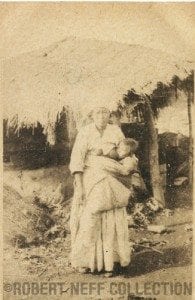If you have a lot of Korean friends you have probably been invited to go to a sauna or jjimjilbang with them. For many foreigners, their first time or two is usually rather an embarrassing affair. It is human nature to have some degree of curiosity of one’s fellow human but – at least in my experience – Korean friends are perhaps a little too open with their observations. This, however, is not a new phenomena in Korea – in fact, it was a common complaint amongst Westerners during the Joseon era.
Early Western visitors to Korea were often besieged by mobs of Koreans wanting to get a glimpse of these strangers from afar. Westerners, because they were bigger and hairier, were sometimes compared to animals. More than a few Westerners had hair plucked from their exposed arms and legs and one missionary, while sleeping in an inn out of Busan in the 1890s, had to physically threaten one curious Korean with his umbrella in order to dissuade him from his continual “skinship.”
Trips to the restrooms or toilets were just as trying. When camping, some foreigners found the only way they could get any privacy while taking care of intimate matters was to erect a tent around them – but this didn’t always work as some of the more curious would try to open the flaps with long sticks. George C. Foulk, an American naval officer who traveled extensively through Korea in 1884, found it tedious to use the facilities as his Korean guards used physical force to prevent the anxious mobs from catching a glimpse of him.
Western women had it even worse. Isabella Bird Bishop, an elderly British traveler, actually had to display a revolver on her lap to discourage the mob from forcing her door open while she was sleeping at an inn in the countryside. It was not uncommon for the paper windows to be riddled with holes – the result of moistened fingers pressed up against them – in order to view the Westerners within the rooms.
One young Western girl grew so infuriated with the curious crowds that she got up and flung the door opened and demanded them to disperse – it was only then that she realized she was barely dressed and had provided the crowd with what they had sought: confirmation that her body was like their own, albeit a little paler.
Early visitors to Korea were often shocked at what they perceived to be the country’s immodesty. One American described Korea as “a land of naked children” and another noted that the children “dressed only in a smile.”
While the children’s unabashed behavior may have been understandable to their Western visitors, the bared-breasts of Korean women of the lower classes offended their sensibilities. James Morrison, an Englishman who traveled to Korea in 1883, noted Korean women wearing jackets that were “so short that it is little more than a collar, and between it and the skirt there is a lucid interval of five or six inches through which the breasts protrude or generally hang.
Even when the face is carefully concealed, the women think nothing of exposing this part of their persons, and if the cloak over the face covers this also, it is only as a secondary affair.” The late Horace G. Underwood once told the tale of an American missionary who was offended by the perceived immodesty of the Korean women. According to Underwood, this missionary traveled through the streets of Seoul with safety pins and pieces of cloth and covered up the bared-breasts of every Korean woman she encountered.
Like many people, she was unaware of the significance of the breasts revealing jackets and merely thought of them as part of a quaint Korean custom. Only women who had borne sons were allowed to wear these jackets and thus they were a symbol of pride, not shame.
Of course, not all nakedness was a source of pride – some was out of necessity. Charles-Louis Varat, a French explorer who traveled to Korea in the fall of 1888, apparently had an interesting encounter with a young Korean prince and his retinue aboard a steamship traveling between Kobe and Nagasaki, Japan.
Varat befriended the young prince out of a desire to learn more about him and his culture. Varat soon learned more about the young prince than he expected or wanted. Many of the early visitors to Korea were missionary doctors and apparently the prince thought Varat had medical skills. He rushed up to the Frenchman “showing signs of great anguish” and rolled up the sleeves of his outfit and presented his arm which was covered with “thousands of bites that [speckled] his unusually white skin.”
Varat attempted to reassure him that he was merely the victim of mosquitoes but the prince merely shook his head and insisted it was much worse. He suddenly pulled down his pants and presented “the first quarters of a moon” that Varat “quickly [tried] to eclipse by covering it.” It is unclear if Varat administered a soothing ointment to the afflicted areas of the prince’s body.
For the most part, Korean men were careful in regards to their clothing and it wasn’t until after the late 1890s that they began to appear in photographs wearing less clothing – possibly the result of Japanese influence. Even up until the 1980s it wasn’t uncommon to see naked Korean men and children bathing in streams – maintaining their modesty by merely turning their backs to the public. Perhaps like beauty, modesty is in the eye of the beholder.
Words by Robert Neff
All photos from the collection of Robert Neff


